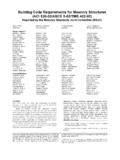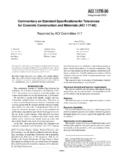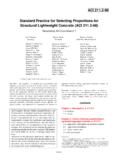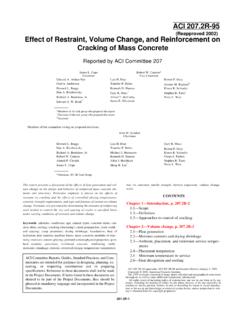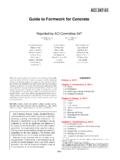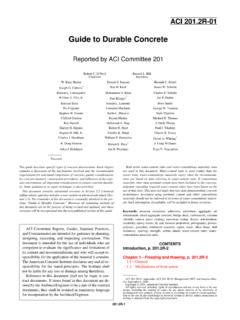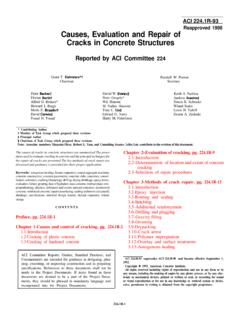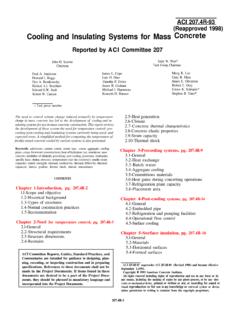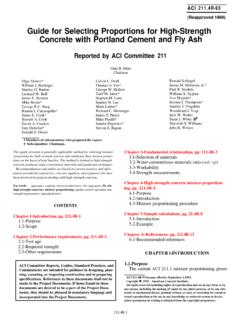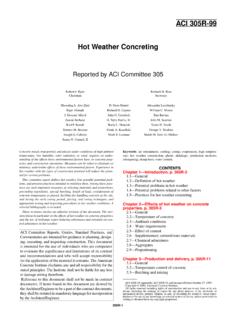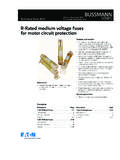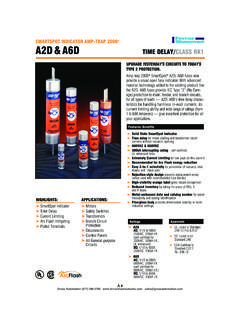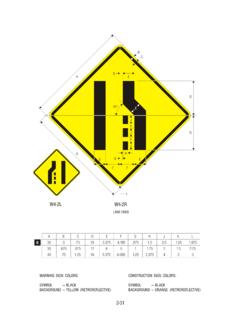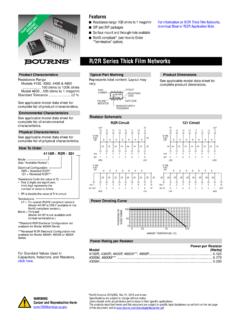Transcription of 304.2R-96 Placing Concrete by Pumping Methods
1 ACI Placing Concrete by Pumping Methods Reported by ACI Committee 304. Neil R. Guptill, Chairman David J. Akers Robert A. Kelsey* James S. Pierce Casimir Bognacki* John C. King Paul E. Reinhart James L. Cope William C. Krell Royce J. Rhoads*. Michael Gardner Gary R. Mass Kenneth L. Saucier Daniel J. Green* Patrick McDowell Paul R. Stodola Terence C. Holland Dipak T. Parekh William X. Sypher*. Thomas A. Johnson* Roger J. Phares* Robert E. Tobin*. Samuel A. Kalat Kevin Wolf *Member of subcommittee that prepared this report. Chairman of subcommittee that prepared this report. This report describes pumps for transporting and Placing Concrete . Rigid Trailer pumps and flexible pipelines are discussed and couplings and other accessories Truck-mounted Concrete pumps described.
2 Recommendations for proportioning pumpable Concrete suggest Placing booms optimum gradation of aggregates; outline water, cement, and admixture requirements; and emphasize the need for evaluation of trial mixes for Specialized equipment pumpability. The importance of saturating lightweight aggregates is Safety stressed. Suggestions are given for layout of lines; for maintaining uniform delivery rate, as well as uniform quality of Concrete at the end of the line; Chapter 3 Pipeline and accessories, p. and for cleaning out pipelines. General description This report does not cover shotcreting or Pumping of nonstructural insu- System pressure capacity lating or cellular Concrete .
3 Rigid Placing line Straight sections, bends, and elbows Keywords: admixtures; aggregate gradation; aggregates; cement content;. coarse aggregates; Concrete construction; concretes; conveying; couplings; System connection fine aggregates; fineness modulus; lightweight aggregate Concrete ; light- Flexible system Hose types and applications weight aggregates; mix proportioning; pipeline; Placing ; Placing boom; Concrete Placing system accessories pozzolans; pumped Concrete ; pumps; quality control; water content. Chapter 4 Proportioning pumpable Concrete , p. CONTENTS Basic considerations Chapter 1 Introduction, p. Normal weight aggregate Lightweight aggregate Concrete Chapter 2 Pumping equipment, p.
4 Water and slump Piston pumps Cementitious materials Types of valves Admixtures Fiber reinforcement ACI Committee Reports, Guides, Standard Practices, Design Trial mixes Handbooks, and Commentaries are intended for guidance in planning, designing, executing, and inspecting construction. Testing for pumpability This document is intended for the use of individuals who are competent to evaluate the significance and limitations of its con- Chapter 5 Field practices, p. tent and recommendations and who will accept responsibility for General the application of the material it contains. The American Con- Pipeline Concrete placement crete Institute disclaims any and all responsibility for the appli- Powered boom placement cation of the stated principles.
5 The Institute shall not be liable for any loss or damage arising therefrom. Reference to this document shall not be made in contract docu- ments. If items found in this document are desired by the Archi- ACI supersedes ACI and became effective January 1, 1996. Copyright 1996, American Concrete Institute. tect/Engineer to be a part of the contract documents, they shall All rights reserved including rights of reproduction and use in any form or by any be restated in mandatory language for incorporation by the Ar- means, including the making of copies by any photo process, or by any electronic or mechanical device, printed or written or oral, or recording for sound or visual repro- chitect/Engineer.
6 Duction or for use in any knowledge or retrieval system or device, unless permission in writing is obtained for the copyright proprietors. ACI COMMITTEE REPORT. Chapter 6 Field control, p. Pumping distance about 3 to 4 ft because three to four times more pressure is required per foot of vertical rise than is nec- Chapter 7 References, p. essary per foot of horizontal movement. Recommended references Pumped Concrete moves as a cylinder riding on a thin lu- Cited references bricant film of grout or mortar on the inside diameter of the Other references Before Pumping begins, the pipeline interior di- ameter should be coated with grout. Depending on the nature Appendix 1 Metric (SI) system adaptation, p.
7 Of material used, this initial pipeline coating mixture may or 25. may not be used in the Concrete placement. Once Concrete flow through the pipeline is established, the lubrication will CHAPTER 1 INTRODUCTION. be maintained as long as Pumping continues with a properly ACI defines pumped Concrete as Concrete that is transport- proportioned and consistent mixture. ed through hose or pipe by means of a pump. Pumping con- crete through metal pipelines by piston pumps was CHAPTER 2 Pumping EQUIPMENT. introduced in the United States in Milwaukee in 1933. This Concrete pump used mechanical linkages to operate the Piston pumps pump and usually pumped through pipelines 6 in. or larger in The most common Concrete pumps consist of a receiving diameter.
8 Hopper, two Concrete Pumping cylinders, and a valving sys- Many new developments have since been made in the con- tem to alternately direct the flow of Concrete into the pump- crete Pumping field. These include new and improved ing cylinders and from them to the pipeline (Fig. 1). One pumps, truck-mounted and stationary Placing booms, and Concrete cylinder receives Concrete from the receiving hop- pipeline and hose that withstand higher Pumping pressures. per while the other discharges into the pipeline to provide a As a result of these innovations, Concrete placement by relatively constant flow of Concrete through the pipeline to pumps has become one of the most widely used practices of the Placing area.
9 Pistons in the Concrete cylinders create a the construction industry. vacuum to draw in Concrete on the intake stroke and mechan- Pumping may be used for most Concrete construction, but ically push it into the pipeline on the discharge stroke. These is especially useful where space for construction equipment pistons are driven by hydraulic cylinders on most pumps, but is limited. Concrete Pumping frees hoists and cranes to de- may be driven mechanically. Primary power is provided by liver the other materials of construction concurrently with diesel, gasoline, or electric motors. The cost of Concrete Concrete Placing . Also, other crafts can work unhampered by pumps and their maximum Pumping capacity and pressure Concrete operations.
10 Applied to the Concrete vary greatly. Components are sized to A steady supply of pumpable Concrete is necessary for sat- provide the desired output, volume, and pressure on the con- isfactory A pumpable Concrete , like conventional crete in the pipeline. The hydraulic pumps on most units are Concrete , requires good quality control, , uniform, proper- equipped with horsepower limiters that protect the power ly graded aggregate, materials uniformly batched and mixed unit by destroking or reducing displacement to reduce the Concrete pumps are available with maximum volume output of the hydraulic pump so it can provide the output capacities ranging from 15 to 250 yd 3/hr. pressure required to move Concrete at the maximum height Maximum volume output and maximum pressure on the or distance of the Concrete pump's capability.
